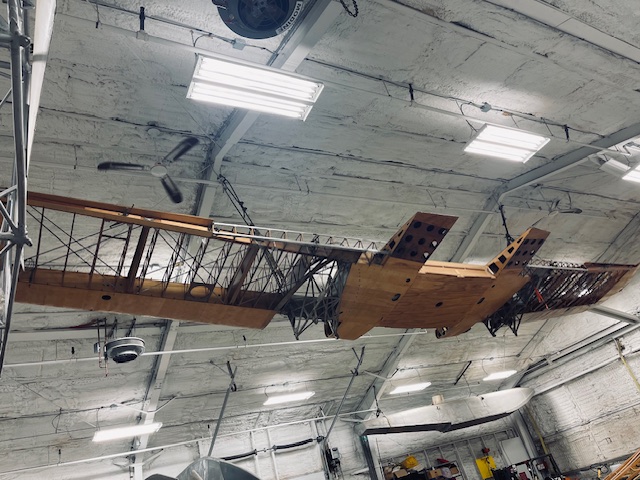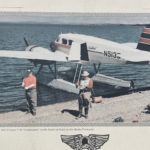An Aircraft of Wood
By Bernie Willis
Where is the wood in your airplane? You may say, “Modern airplanes are made of aluminum and 4130 chromoly steel, there’s no wood!” But are you sure? If yours is a Cessna, 1960 or newer you’re probably right. But many Piper, Beechcraft, American Champion, Taylorcraft, and Bellanca aircraft have wooden parts. The photo shows a UC-78 twin-engine WWII trainer wing. They were common on floats in Alaska after the war.
Wood comes in many varieties from all over the world, each with its special characteristics. For aircraft use Sitka spruce has been a favorite because of its weight to strength ratio. Prior to WWI, the Pacific Northwest was literally covered in Sitka spruce. Many of them were over 300′ in height with branches in only the top 50′. This left a huge amount of knot-free, close-grained wood. The demands from Europe were so large that the US army had a 10,000 man crew cutting and preparing wood for aircraft. Real close to spruce in strength to weight are Douglas fir and western hemlock. In the upper central states and East coast was the source of ash wood used for longerons. You’ve all heard of the Spruce Goose, Howard Hughes’ boondoggle troop transport for WWII. There was little of any Spruce in it. It’s mostly built of Birch plywood.
Wood has many benefits over aluminum for aircraft construction. The strength to weight ratio is excellent. A bullet hole through a spar or rib is not a catastrophe. It bends further before breaking than aluminum and typically returns to its original position. So if wood is so great, why aren’t not using it much today?
Wood, aluminum and steel are all natural materials in the sense that if left unprotected they return to their original elements. Aluminum will return to a grey dust, steel to a red powder, and wood to dirt. I believe it’s the ease of use that makes aluminum so popular. Its the strength of 4130 chromoly steel tube that makes the safety cage in the Mooney and Helio Courier. Even the Beaver, while mostly aluminum, has a steel bulkhead between the fuselage and the engine mount. I once thought that the carbon cub had a carbon fuselage. I was wrong, it’s welded 4130 steel tubing. Another factor with wood is its significant change in dimension with moisture. If you have wood furniture in your home you know how loose it gets in the dry winter air but tightens when the rains come in the spring. Humidity also affects aluminum and steel, though not the same way. They will decay if unprotected. The ideal condition for wood preservation is a moisture content of less than 15% while metal seems to hold its own with a temperature below 50°F and humidity below 50%.
If you have wood spars or any exposed wood wing parts protect them with a marine UV inhibiting varnish, fabric covering without any defects and a hangar when not flying.


